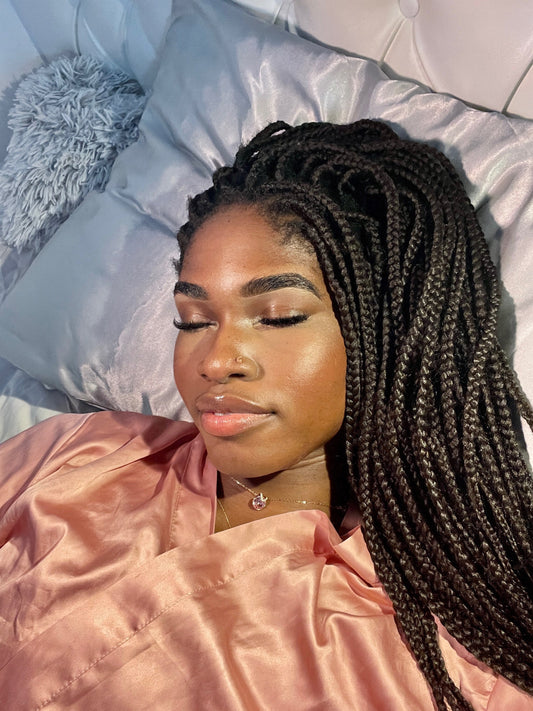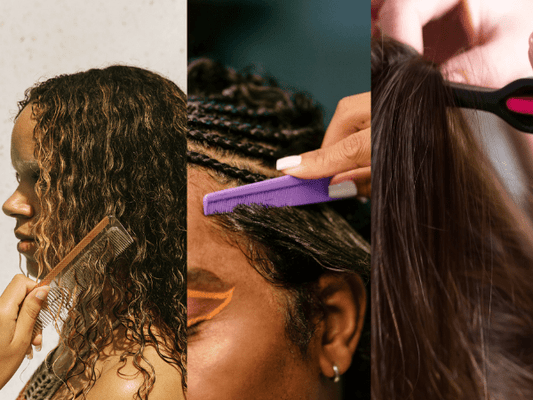Understanding Low Porosity Hair
Low porosity hair has cuticles that lay flat and tight against the hair shaft, making it difficult for moisture, oils, and treatments to penetrate. While this characteristic means that low porosity hair is often resistant to absorption, it also tends to retain moisture well once it's adequately hydrated. The key to managing low porosity hair lies in understanding how to effectively deliver moisture and nutrients to the hair shaft.
The Challenges of Low Porosity Hair
- Moisture Absorption: The primary challenge is getting moisture to penetrate the tight cuticle layer, leading to products sitting on the hair's surface and causing buildup.
- Protein Sensitivity: Low porosity hair is often protein-sensitive, meaning that too much protein can make it feel stiff and straw-like.
- Styling and Drying Time: Due to its moisture-resistant nature, low porosity hair can take longer to dry. It may also be more challenging to style since products don't easily absorb.
Effective Moisturizing Strategies
Unlocking the secrets to low porosity hair begins with effective moisturizing strategies:
1. Use Heat with Deep Conditioning Treatments: Gently heating your hair during deep conditioning treatments can help open up the cuticles. Use a steamer, warm towel, or hooded dryer to enhance the absorption of moisturizing ingredients.
2. Choose the Right Products: Look for lightweight, liquid-based moisturizers that won't sit heavily on your hair. Ingredients like glycerin, honey, and aloe vera are excellent for drawing moisture into the hair shaft.
3. Apply Products to Damp Hair: Applying leave-in conditioners, moisturizers, and stylers to damp hair can help with absorption. The water helps to slightly raise the cuticle, allowing for better product penetration.
Minimizing Buildup
Managing product buildup is crucial for low porosity hair care:
1. Clarify Regularly: Use a clarifying shampoo or an apple cider vinegar rinse once a month to remove buildup from the hair and scalp, ensuring that your moisturizing products can work more effectively.
2. Avoid Heavy Products: Steer clear of heavy butters and oils that can coat the hair's surface and exacerbate buildup. Instead, opt for lighter oils like argan or grapeseed oil, which are more easily absorbed.
Protein Balance
Maintaining the right balance of protein is essential for low porosity hair:
1. Limit Protein Treatments: Only use protein treatments sparingly, and opt for products with silk or plant-based proteins that are lighter and less likely to cause buildup.
2. Monitor Hair's Response: Pay attention to how your hair reacts to protein. If it starts to feel dry or brittle, cut back on protein-containing products and focus on hydration.
Styling and Maintenance Tips
Achieving beautiful styles while maintaining the health of low porosity hair is possible with the right approach:
1. Use Lightweight Stylers: Lightweight gels, mousses, and creams can define curls and add hold without weighing down your hair or causing buildup.
2. Seal with Light Oils: After moisturizing, seal in the moisture with a light oil or serum. This can help prolong hydration and add shine.
3. Be Patient with Drying: Allow for adequate drying time, or use a blow dryer with a diffuser on a low heat setting to speed up the process without causing damage.
Conclusion
Unlocking the secrets of low porosity hair requires patience, understanding, and a tailored approach to hair care. By focusing on effective moisturizing strategies, minimizing buildup, maintaining protein balance, and choosing the right products for styling and maintenance, individuals with low porosity hair can achieve healthy, hydrated, and vibrant curls or strands. Remember, the journey to mastering your low porosity hair is a personal one, filled with discovery and adjustments. Embrace the process, and celebrate the unique beauty of your locks, knowing that with the right care, your hair can thrive in all its natural glory.











